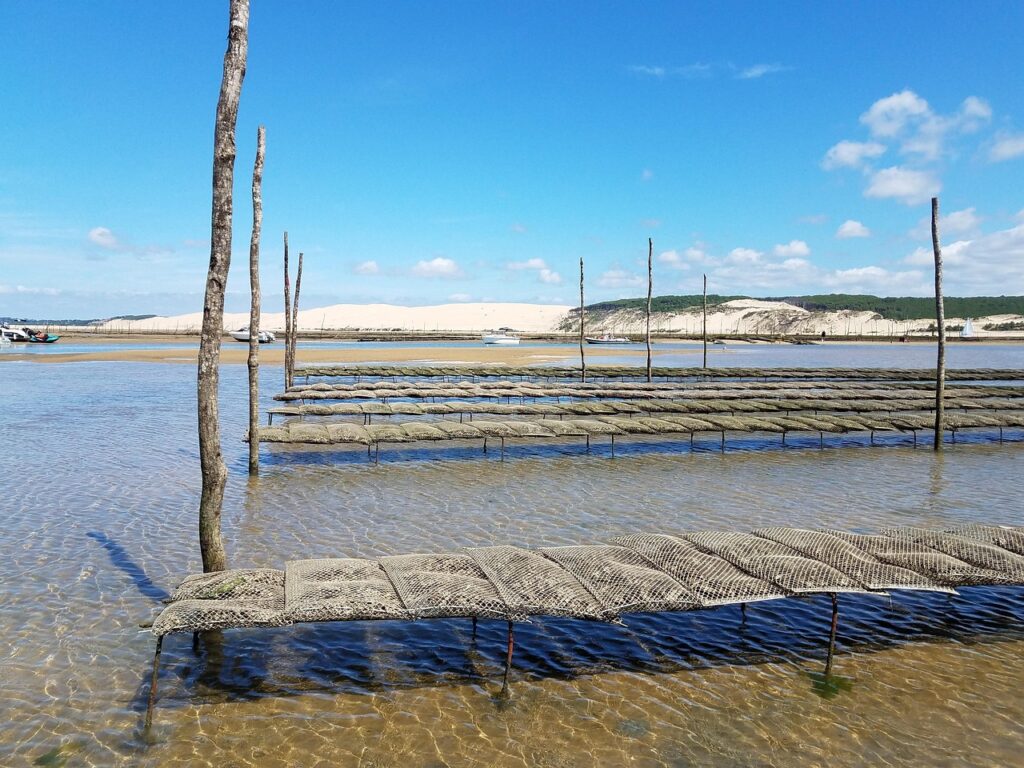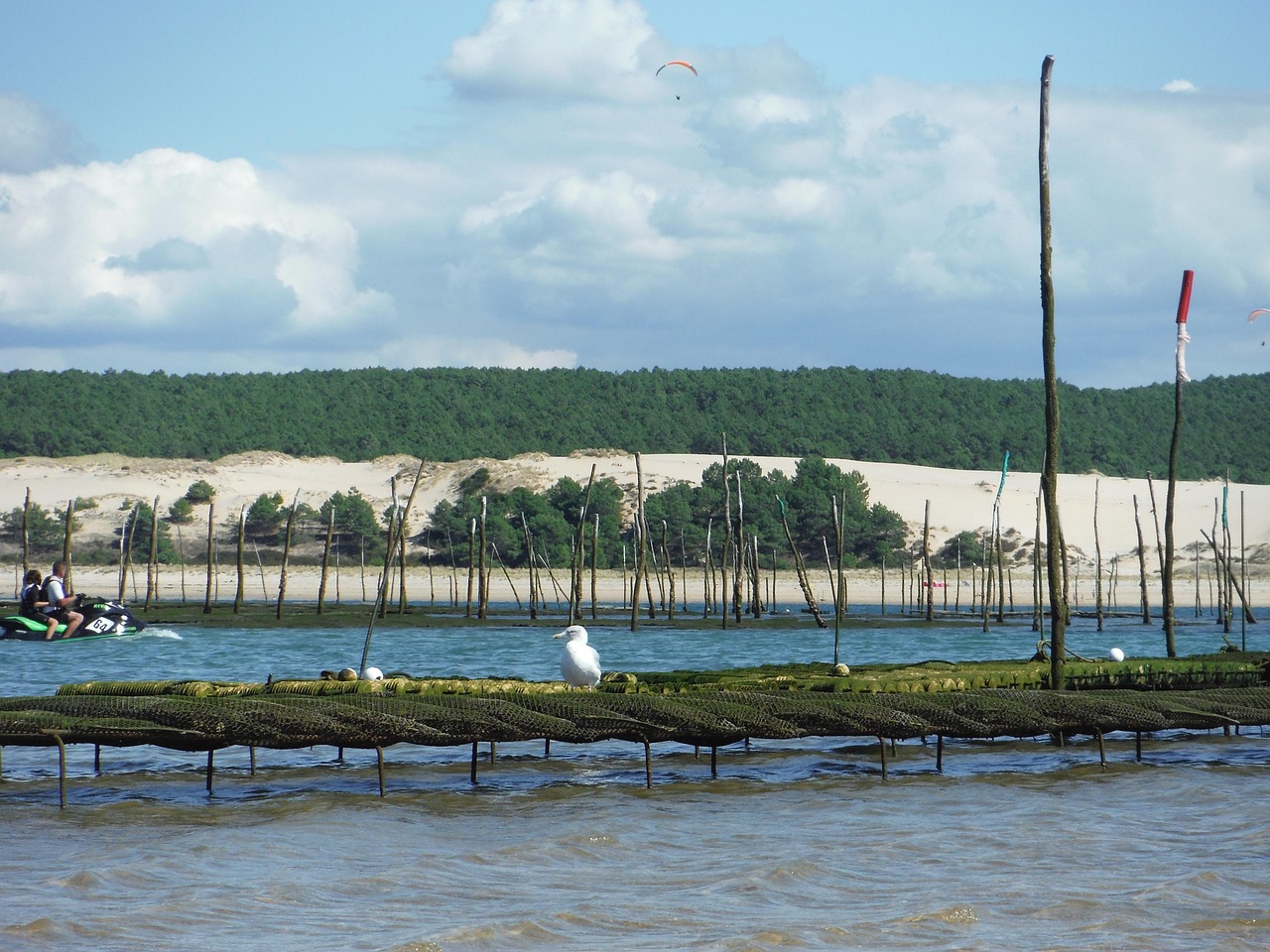One of the best places in France to taste oysters is the region around Arcachon. On the Atlantic coast in south-west France, about 55 kilometres southwest of Bordeaux, Arcachon is famous for its white-sand beaches and Victorian-style houses. The seaside resort was a popular holiday spot for Brits in the 19th century.
Just south of the town is Europe’s largest sand dune, the impressive Dune de Pilat, which our Bordeaux friend, Patrick, introduced us to while showing us the local sights. Walking on soft sand is hard work, especially when it’s a dune that extends to 104 metres in height, 500 metres in width, and 2.7 kilometres in length.
Couple that with the fierce sun and we certainly needed to find ourselves a spot where we could enjoy a glass of crisp white wine and some freshly shucked oysters. Thankfully, we were in the perfect place to find just such a spot.
There are more than 900 hectares of oyster beds in Arcachon Bay, which cumulatively produce around 8-10,000 tonnes of oysters a year. The bay is an important sanctuary for birds, including the pied oystercatcher. Small oyster-farming communities with wooden houses on stilts are dotted all around the bay.
Across the bay from Arcachon, the thickly wooded Lège-Cap-Ferret Peninsula has 22 kilometres of sandy beaches stretching along its western side. On the eastern side of the peninsula, unspoilt oyster-farming villages like Canon and L’Herbe are perfect for exploring on foot.
The region’s oyster capital is unquestionably Gujan-Mestras, on the Arcachon side of the bay. This small town has seven oyster farming ports producing 55 per cent of all the oysters farmed in the bay. It’s all very picturesque as you wander past long, slender boats made of pine (‘pinasses’), and wooden cabins where you can taste the oysters.
In one of the ports, there is a museum which tells the story of oyster farming in the region. A visit to La Maison de l’Huître (The Oyster House) begins with a short film, followed by a guided tour of rooms showing artefacts and farming tools, anecdotes and recipes. Much to our regret, the museum was closed for lunch when we were there — you’ve got to love the long and sacred French lunch 😊
The museum can arrange guided walking tours of Port de Larros, but we did our own tour, setting off on foot to find one of the 12 tasting cabins in the area. There, we enjoyed freshly shucked oysters in the traditional way, with a squeeze of lemon.

These ‘Portuguese’ oysters are the major variety in the region. Why? Their origins go back to 1868, when a Portuguese ship loaded with oysters took refuge in French waters during a storm. The cargo, thought to be rotten, was thrown overboard and some of the survivors bred.
Although the Arcachon oyster, known as ‘Gravette’, was popular in Bordeaux in the 19th and early 20th centuries, it was small and irregular and required more attention than the ‘Portuguese’ oysters which eventually and inevitably won out.
Fishing and oyster farming have been part of everyday life in the Arcachon Bay for centuries.
Oyster farming took off around the 1860s when lime-washed roof tiles were placed on the seabed, enabling spat (oyster larvae) to attach themselves to the tiles and grow. In spring, the spat are detached from the tiles and transferred to oyster beds a few kilometres out to sea, where they are left to reach maturity.
Arcachon is a beautiful region to visit at any time of year, but if you really want to celebrate the oyster, plan your visit for the first few weeks in August when there are various events and fairs, particularly in Gujan-Mestres.
